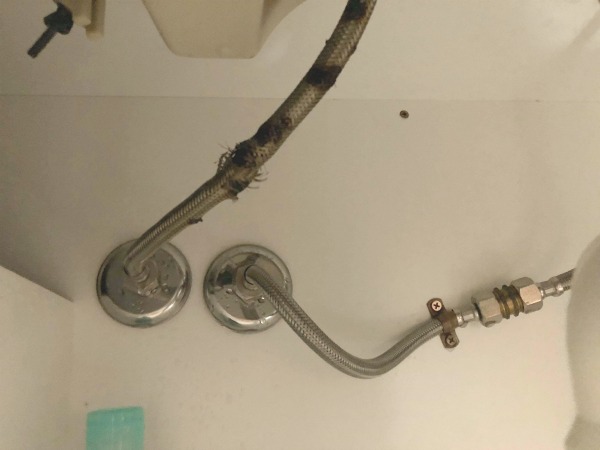I’ve always encouraged to group plumbing jobs together to ensure you pay one plumber’s call out fee when the plumber arrives at your property. Making the most from your plumber’s call out fee can protect your home and give peace of mind, knowing everything is as it needs to be.
If you’re wondering what else you could possibly get your plumber to do at your property, here are some checks and installations to consider.
1. Check all the flexible hoses
Flexible hoses are notorious for bursting or rupturing after a certain amount of time.
Get your plumber to check all the flex hoses for rusting, twisting or uncoiling of the metal threads. Get them replaced to prevent an unexpected flood in your house.
2. Check water leaks and change washers
While your plumber checks the flex hoses, get them to test the taps and check for leaks. Your plumber can replace washers in the taps or give a quote for replacing the ceramic disc spindles.
Want to know when it’s the right time to change tap washers? You can read that post here.
3. Install a stop tap at the front of your property
If you’ve ever tried to turn off the water at your water meter and have struggled, you can make it easier for yourself. Get your plumber to install a ball valve closer to your property so with a flick of a lever you can turn the water off instantly to your house. This will avoid struggling to turn off a stubborn water meter and also acts as a back-up if the water meter ever fails (which they commonly do).
4. Visually inspect gutters and drain pipes
If you’re not one to visually inspect the outside plumbing of your home, get your plumber to do it for you. If they can’t fix the problem there and then, they can give you a quote to get it fixed. Maintaining the exterior plumbing of your home is vital to draw away water during wet weather events.
5. Check hot water unit for leaks and efficiency
A lot of hot water unit problems could be avoided with a visual inspection. Your plumber can test the relief valves, check all connections for leaks and test the temperature coming out of the hot water unit. A rusted out unit is a sign for a replacement.
Here’s what you need to consider when choosing the right hot water unit for your property.
6. Inspect water tank and pump
Your plumber can check the pipes connected to your tank to ensure they have the correct fall. Other visual inspections include the condition of the mesh at the opening. If it’s a bit worse for wear, this can be replaced to keep mozzies and rodents out of the tank. Pumps can be tested for efficiency. The overflow of the tank can also be checked to ensure it diverts away from the home to a storm water pipe to prevent flooding outside the home.
Many of these checks may not prevent a plumbing problem from occurring in the future but they could prevent a near disaster if they haven’t been checked in a while.
Sometimes the inspection may not warrant anything being done until a problem does occur. If your plumber has checked these areas for you, they will be familiar with your property, and know what materials are needed so they are prepared for the next call out.
How have you made the most from your plumber’s call out fee?













